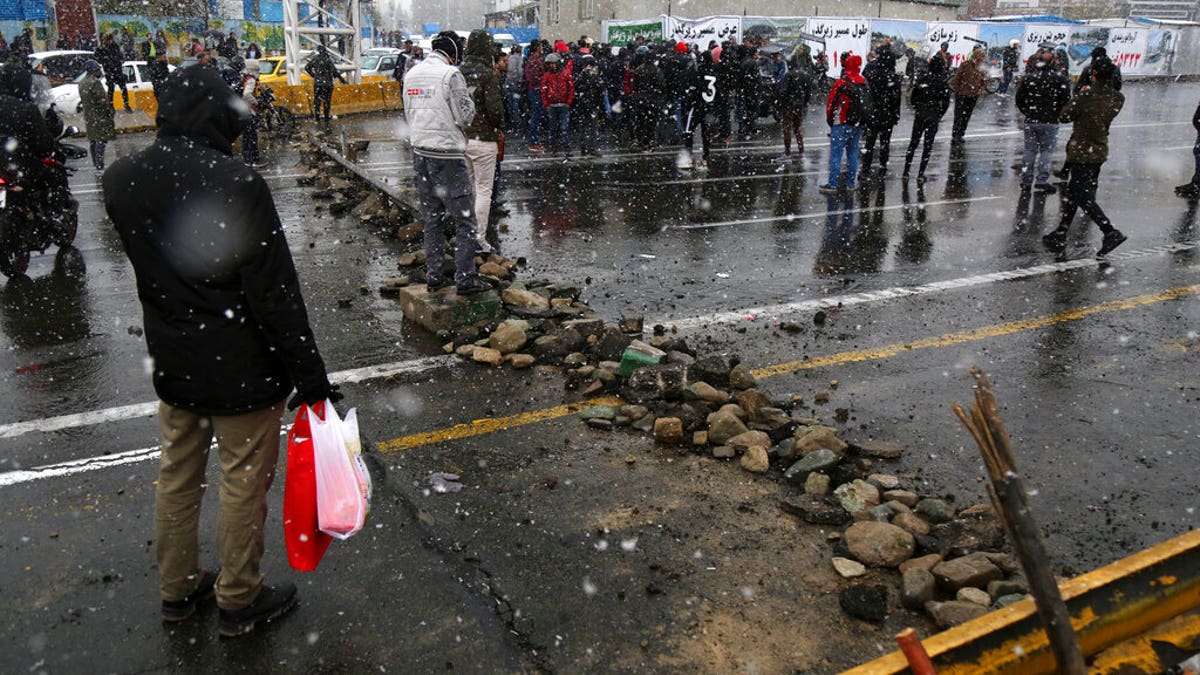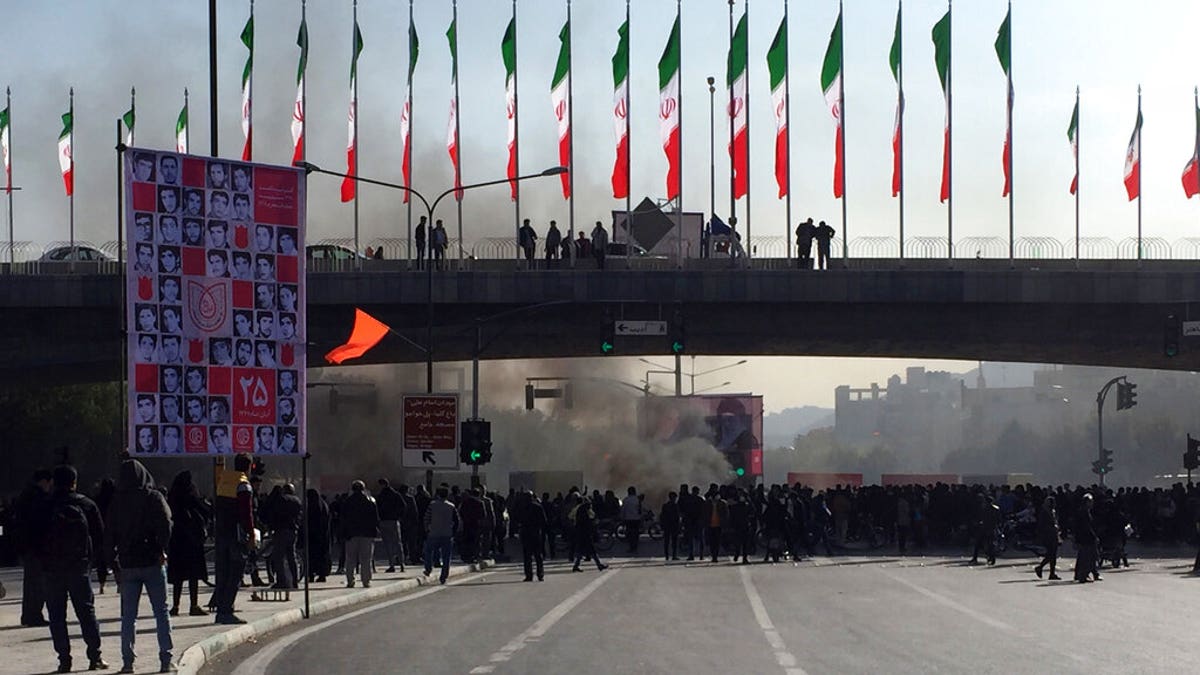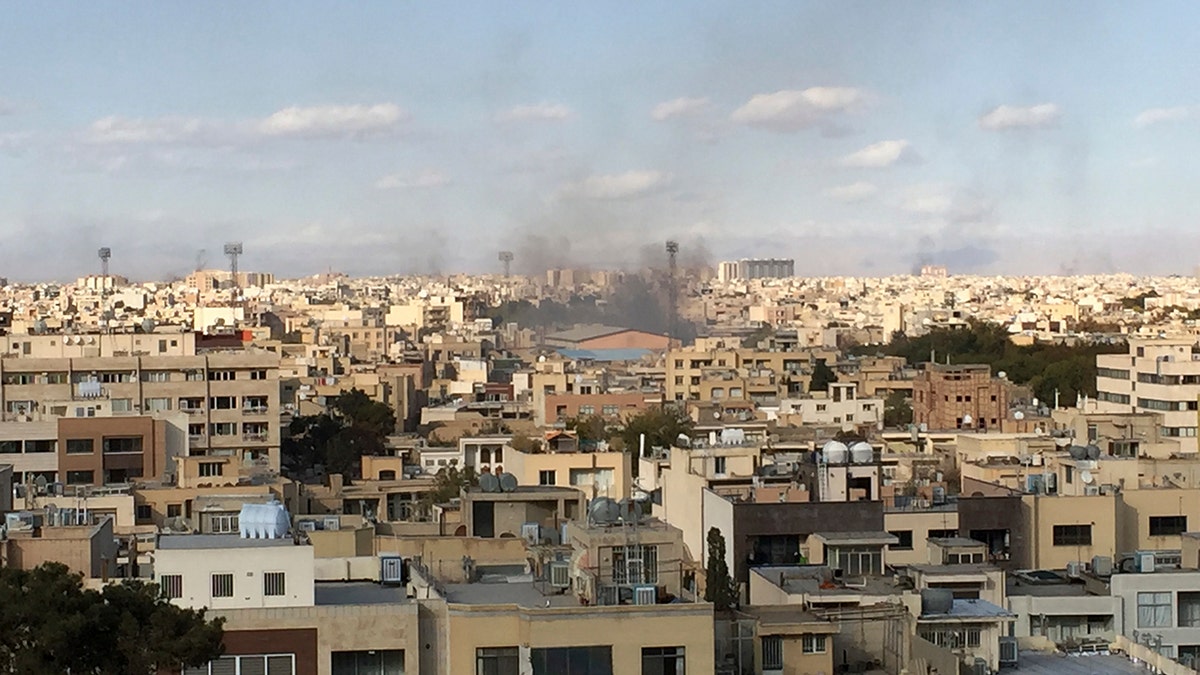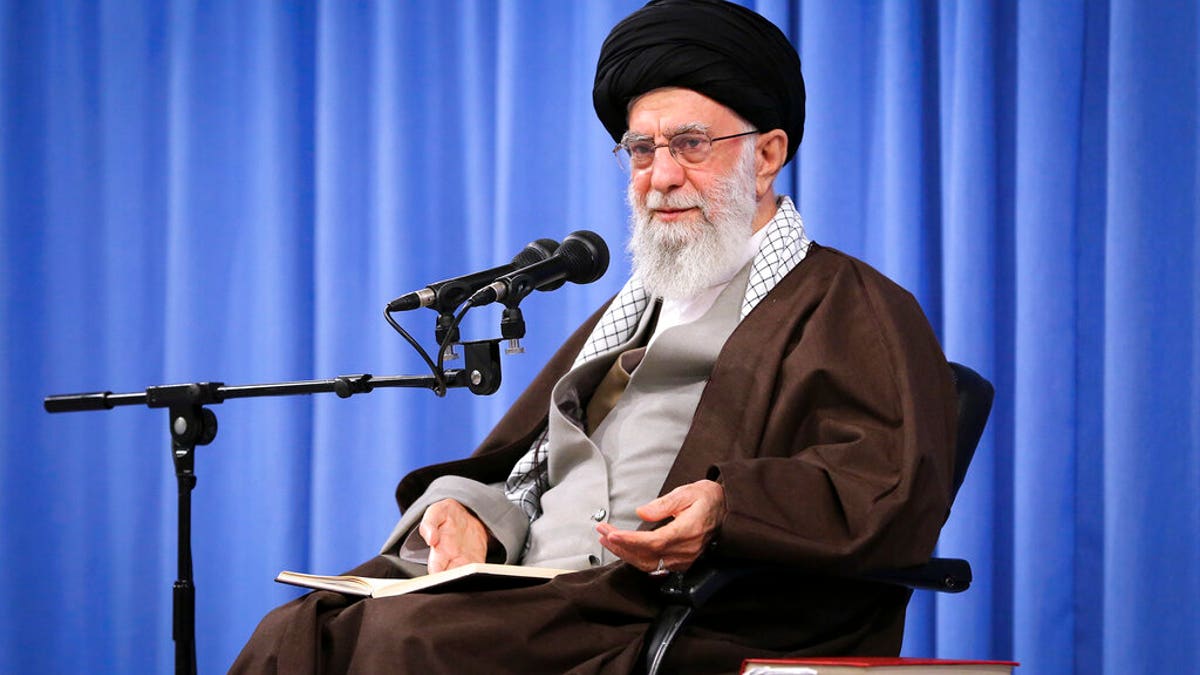Massive protests in Iran over government's decision to raise gas prices
Iran's Revolutionary Guard warns there will be 'decisive' action if the unrest continues; Benjamin Hall reports.
Frustration and anger have yet again gripped streets across Iran this week, in another spate of deadly protests and the increasing divide between citizens and the country’s religious regime.
In the immediate aftermath of the government announcing a slashing of government subsidies and thus massive rise in fuel prices, scores of locals erupted in what they consider to be a hard blow in their personal struggles to stay afloat.
"95 percent of the protesters were the youth, from ages 20 to 25. I was in the streets from the first day, and from the second day, the regime's forces began shooting directly at us," activist Arash, 25, a university graduate from the city of Behbehan told Fox News. "Two of my friends were slain next to me. One of my acquaintances is a nurse. She told me not to bring the wounded and the martyrs to her hospital since the Iranian Revolutionary Guards Corps (IRGC) had dispatched forces there to take away the wounded."

A road is blocked by protestors after authorities raised gasoline prices, in Tehran, Iran, Saturday, Nov. 16, 2019. Protesters angered by Iran raising government-set gasoline prices by 50% blocked traffic in major cities and occasionally clashed with police Saturday after a night of demonstrations punctuated by gunfire. (ISNA via AP)
AMERICAN REPORTER JASON REZAIAN, HELD IN IRAN FOR 544 DAYS, AWARDED $180M FOR CAPTIVITY, TORTURE
According to another Tehran-based university student, who took to the streets chanting “death to the regime,” they simply "don't want to live like this." But since earlier this week, his line has gone dead, indicative of the almost total internet blackout in response to the unrest.
The government reaction has been immediate and harsh, protesters say, more so than in past demonstrations.
Government forces have unleashed bullets from rooftops and helicopters, according to Amnesty International. Other demonstrators have decried the police violence and vowed that those seized are being subjected to heinous forms of torture behind bars. Amnesty International has projected the death toll exceeds more than 100, while other regime critics pledge that more than 200 people have lost their lives.

A gas station shows damages after it was attacked and burned during protests over rises in government-set gasoline prices, in Tehran, Iran, Wednesday, Nov. 20, 2019. Demonstrations struck at least 100 cities and towns, spiraling into violence that saw banks, stores and police stations attacked and burned. (AP)
"It was on the second day that the IRGC attacked us. They were accompanied by the para-military Bassij Forces. They were ruthlessly killing people," recalled Hassan, 52, an automobile mechanic from the city of Mahshahr. "They even brought in helicopters and over the past couple of days, have brought in buses and put those arrested into them. But people's morale is still high, and they are not backing down from their demands."
Moreover, Parvin, 32, a teacher from Shiraz, underscored that the regime is demanding upwards of $2,500 to release a corpse, and that "there are so many wounded they can't be counted."
Authorities have claimed that more than 1,000 people have been arrested, as banks and government offices were vandalized or set on fire, in stark contrast to those involved who insist that the demonstrations were peaceful acts.
IRANIAN CITIZEN WHO VIOLATED US SANCTIONS BY EXPORTING CARBON FIBER GETS PRISON TIME
Many see the iron-fisted crackdown as a critical indicator that Tehran is buckling and fears for its ability to maintain control of the population.
“The regime responded with more violence this time because it is more desperate and its political legitimacy has largely evaporated in the eyes of the long-suffering people,” noted Jim Phillips, a senior research fellow for Middle Eastern affairs at The Heritage Foundation. “Coercive force is now the only option that it has to ensure its survival.”

Smoke rises during a protest after authorities raised gasoline prices, in the central city of Isfahan, Iran, Saturday, Nov. 16, 2019. Demonstrators angered by a 50% increase in government-set gasoline prices blocked traffic in major cities and occasionally clashed with police Saturday after a night of demonstrations punctuated by gunfire. (AP)
The week’s demonstrations have spread across much of the beleaguered nation, ranging from Shiraz, Tehran, and Karaj, through to Mashhad, Isfahan, and beyond.
“This time Iranians have shown they don’t believe in ‘reforms.’ Iranians, especially women, are repressed every day by Ayatollah Khamenei and are rebelling,” said Alireza Nader, a senior fellow at the Foundation for Defense of Democracies (FDD). “The regime is still highly armed and is fighting for its life.”
THE MASTER BEHIND THE MASK: WHO IS IRAN’S MOST FEARED AND POWERFUL MILITARY COMMANDER?

Smoke rises up during a protest after authorities raised gasoline prices, in the central city of Isfahan, Iran, Saturday, Nov. 16, 2019. Protesters angered by Iran raising government-set gasoline prices by 50% blocked traffic in major cities and occasionally clashed with police Saturday after a night of demonstrations punctuated by gunfire, in violence that reportedly killed at least one person. (AP)
Nonetheless, Iranian President Hassan Rouhani has claimed triumph over the demonstrations, boasting at a government meeting in Tehran on Wednesday they had been “victorious out of yet another test” and that they would “never allow the balance to tilt in favor of the enemy.”
As with all the unrest that has permeated over the past decade, Tehran points fingers of blame toward foreign adversaries, with Rouhani accusing “reactionary regional regimes, the Zionists and the Americans” for the demonstrations. The government this week even set-in-motion a counter-protest movement, deploying hundreds of supporters to the streets as an optical show-of-force against the anti-regime rallies.
“The regime is afraid. The Islamic Republic is now trying to drown out Iranian protestors by attempting to create, or perhaps even bribe or coerce into being, pro-regime demonstrations as a show of victory,” said FDD’s Senior Fellow Behnam Ben Taleblu. “This, of course, is a sham, but is one way the regime is trying to re-establish revolutionary credibility and feign that it remains popular when that is less true than ever before.”

In this picture released by an official website of the office of the Iranian supreme leader, Supreme Leader Ayatollah Ali Khamenei talks to clerics in his Islamic thoughts class in Tehran, Iran, Sunday, Nov. 17, 2019. Iran's supreme leader on Sunday backed the government's decision to raise gasoline prices and called angry protesters who have been setting fire to public property over the hike "thugs," signaling a potential crackdown on the demonstrations. (Office of the Iranian Supreme Leader via AP)
Tensions have long simmered throughout the largely isolated and sanctioned nation, as the currency continues to diminish, and costs have spiked for staple food and household items. Exasperated, once middle-class Iranians have long lamented to Fox News their inability to get jobs, the ascending cost of living, and the inability to travel abroad as Tehran’s diplomatic standing deteriorates.
A number of activists are said to belong to the MEK, also known as the National Council of Resistance of Iran. The Paris-based opposition group is considered to be a terrorist organization in Iran and invokes deep divisions among Iranian people. It was previously listed as a foreign terrorist organization by the U.S State Department, but the designation was removed in 2012 and it has since gone on to gain support from several U.S government officials.
IRANIAN PROTESTS OVER HIKED FUEL PRICES KILL AT LEAST 106 PEOPLE, AMNESTY INTERNATIONAL SAYS
But whether or not the Trump administration’s “maximum pressure” campaign designed to squeeze the regime to a breaking point economically is harming rather than helping Iranians, is a topic of much debate. Human Rights groups have denounced the crippling financial burdens now being leveled at citizens, while others maintain it’s the only appropriate course of action.

People walk past a bank that was burned during recent protests, in Shahriar, Iran, some 40 kilometers (25 miles) southwest of the capital, Tehran, Wednesday, Nov. 20, 2019. Protests over government-set gasoline prices rising struck at least 100 cities and towns, spiraling into violence that saw banks, stores and police stations attacked and burned. (AP)
The White House this week released a statement in support of the Iranian people and in condemnation of the government, but many regime critics want to see more from Washington.
“The Trump administration somehow has not issued a single new sanctions designation for human rights violations in well over a year. There are over 60 Iranian human rights abusers that the EU sanctioned a long time ago, but the U.S. never has,” added Alan Goldsmith, an analyst with United Against Nuclear Iran (UANI). “Washington should start by sanctioning all of them—and additional people who bear significant responsibility for the repression of the current protests. The bottom line is the regime is ready, willing, and able to use force to put down protest and unrest; it views its own survival at risk.”
And in the face of continued bloodshed, Iranians on the ground have pledged to keep fighting.
"Our spirit is high. Something very remarkable for me is that the spirit of cooperation and help has intensified remarkably," Parvin added.

